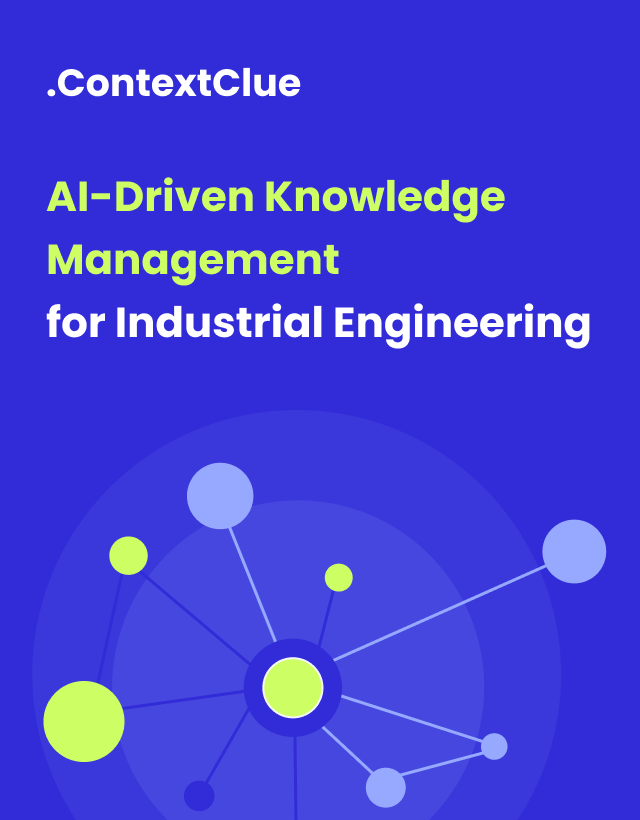
July 18, 2025
What is digital transformation?
Author:

CEO & Co-Founder
Reading time:
4 minutes
Digital transformation means weaving digital tools into every part of a business. It’s not just about adopting new software – it’s about rethinking operations, culture, and customer experience.
Done right, it creates faster processes, new revenue streams, and stronger connections with customers, as McKinsey & Company explains.
Beyond Simple Digitization
Digitization is just turning analog into digital, for example, scanning documents. Transformation goes further. It reimagines entire business models. A retailer that builds an e-commerce platform or mobile app isn’t just digitizing. it’s transforming how it sells, interacts, and grows.
This shift unlocks personalization, predictive insights, and entirely new ways to operate. Companies move from reacting to problems to predicting and preventing them, powered by data-driven ecosystems.
Here are the key digital transformation technologies:
- Cloud Computing: Provides flexible, scalable infrastructure for handling massive data and applications.
- IoT (Internet of Things): Connects devices and creates real-time data streams for smarter operations. By 2025, there could be 55.7 billion connected devices producing nearly 80 zettabytes of data (SavvyCom Software & PECB).
- Edge Computing: Speeds up data processing by keeping it closer to where it’s generated.
- Automation & RPA: Takes over repetitive tasks, reducing costs and freeing people for higher-value work.
The Role of Artificial Intelligence
AI is the real engine of digital transformation. Unlike other tools, AI doesn’t just process data – it learns, predicts, and can even act independently. It shifts companies from reactive to proactive, enabling smarter decisions and new business models.
Machine Learning: Predicting What’s Next
Machine learning (ML) is the foundation of AI transformation. Instead of just looking at what already happened, ML analyzes patterns to predict what’s likely to happen next – and even recommends what to do.
- In manufacturing, ML predicts equipment failures, cutting downtime and boosting productivity by up to 30% (AlAreeb ICT).
- In finance, ML powers fraud detection and real-time risk analysis, catching anomalies in milliseconds.
- In retail, it drives product recommendations, tailoring offers based on browsing behavior, purchase history, and seasonality.
The key advantage: these systems get better over time. The more data they process, the more accurate they become, making them self-improving assets for business.
Generative AI: Beyond Content Creation
Generative AI is often linked to text and image creation, but its potential runs much deeper. It can synthesize huge amounts of data, uncover hidden connections, and even act as an autonomous agent.
- AI agents can plan, reason, and carry out multi-step workflows. Companies use them to manage supply chains, optimize production, or even make investment decisions with minimal human oversight.
- Knowledge graphs built by generative AI connect data across the organization, customer interactions, sales, operations, into a single intelligence layer for patterns and opportunities humans might miss.
- Strategic planning is evolving: AI can analyze markets, competitors, and regulations to recommend detailed strategies, not just content or quick fixes.
Hyperautomation: The Next Level
AI also powers hyperautomation, where machine learning, AI, and RPA work together to automate entire processes, not just tasks. For example, in insurance, hyperautomation can read documents, check data across systems, make approval decisions, and trigger follow-up actions, all without human involvement.
The result is faster, cheaper, and smarter workflows that continuously adapt.
Personalized Experiences at Scale
AI transforms the customer experience by analyzing millions of interactions to predict preferences, recommend products, and anticipate needs.
- Amazon reports that 35% of purchases come from its recommendation engine.
- Netflix says 80% of content viewed is driven by AI-powered suggestions.
Employees benefit too, AI personalizes training, productivity tools, and even work schedules.
Business Impact of Digital Transformation
Digital transformation pays off with efficiency gains, cost savings, new revenue opportunities, and better customer experiences. The global market is projected to reach $3.7 trillion by 2025, growing at 22% annually, with AI spending rising three times faster than overall tech investments (IDC).
Companies that succeed see clear ROI, whether through automation, data-driven growth, or customer retention, though measuring impact remains tricky.
Challenges to Overcome
Success isn’t easy. Only about a third of digital transformation projects fully achieve their goals. Common obstacles include:
- Employee resistance to change
- Gaps in digital skills
- Weak change management strategies
The companies that succeed balance tech adoption with cultural change, data readiness, and customer focus.
The Future of Digital Transformation
Transformation is a continuous journey. Businesses now take smaller, modular steps, adapting as markets and technologies shift. By 2026, 30% of enterprises will automate more than half of their network processes, up from less than 10% in 2023 (Third Stage Consulting).
The future will be shaped by AI, automation, and strong ethical frameworks for governance (InCit, Canidium).
In short, digital transformation is about much more than technology—it’s about reinventing how companies operate, compete, and grow in a digital-first world.
Category:





